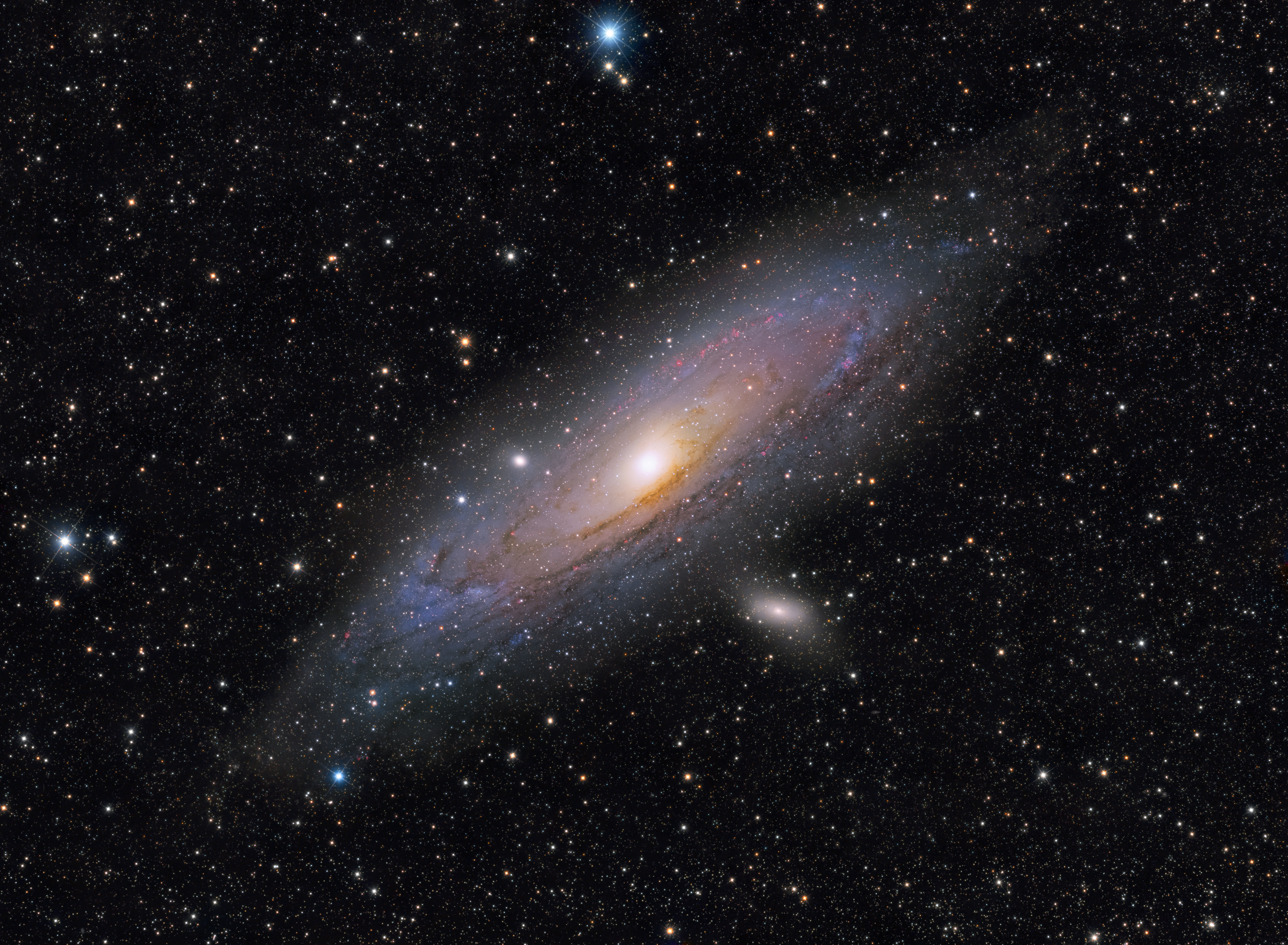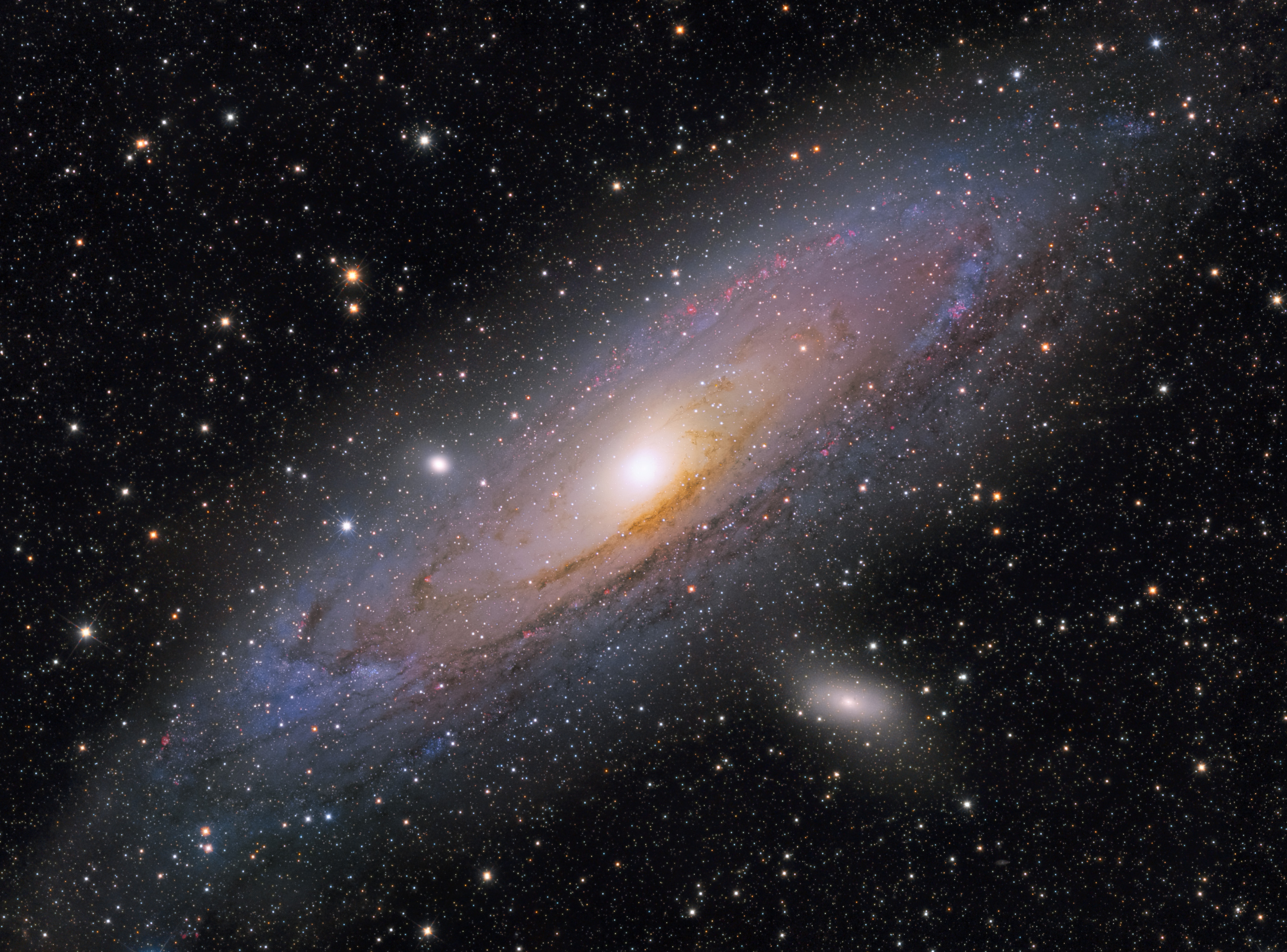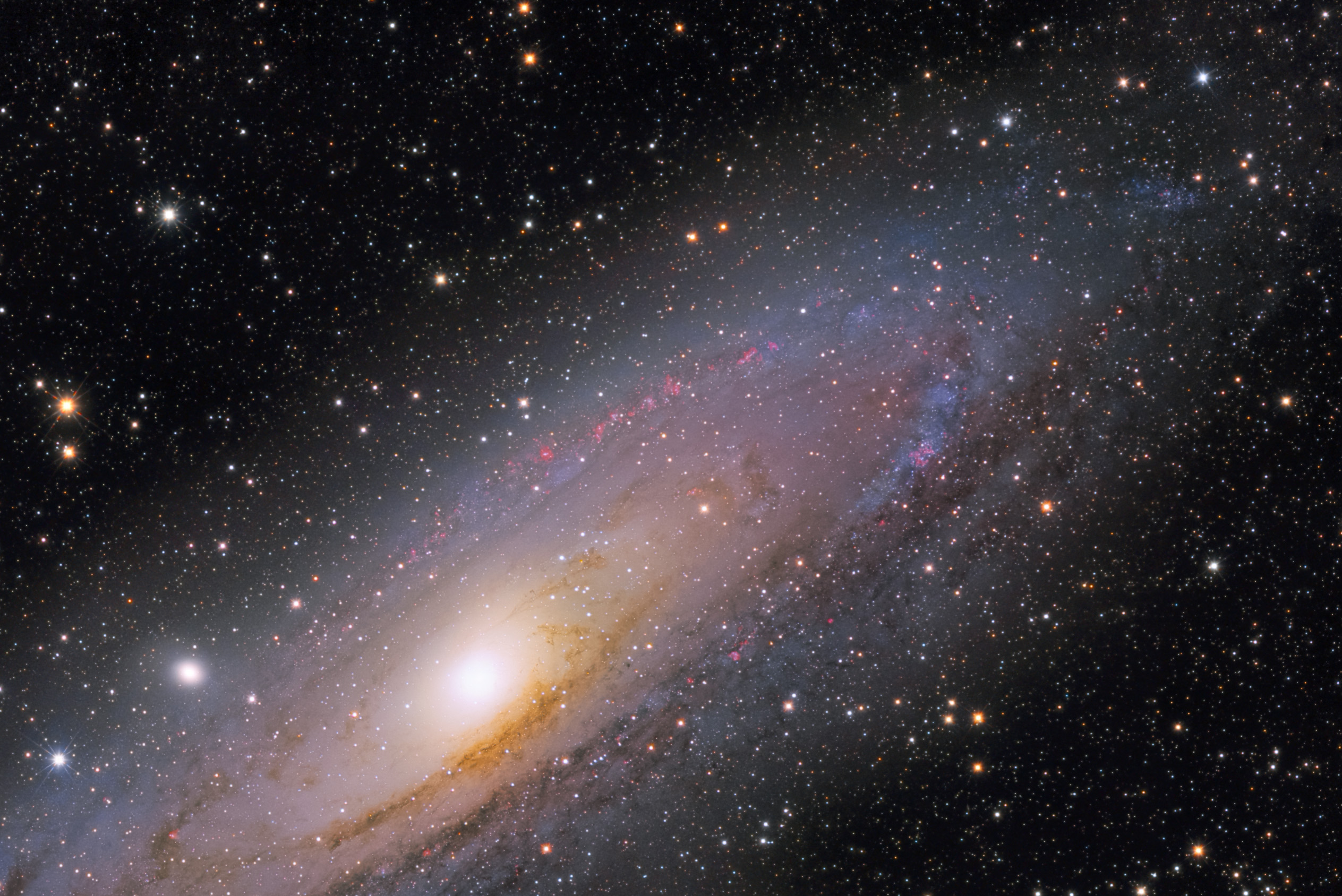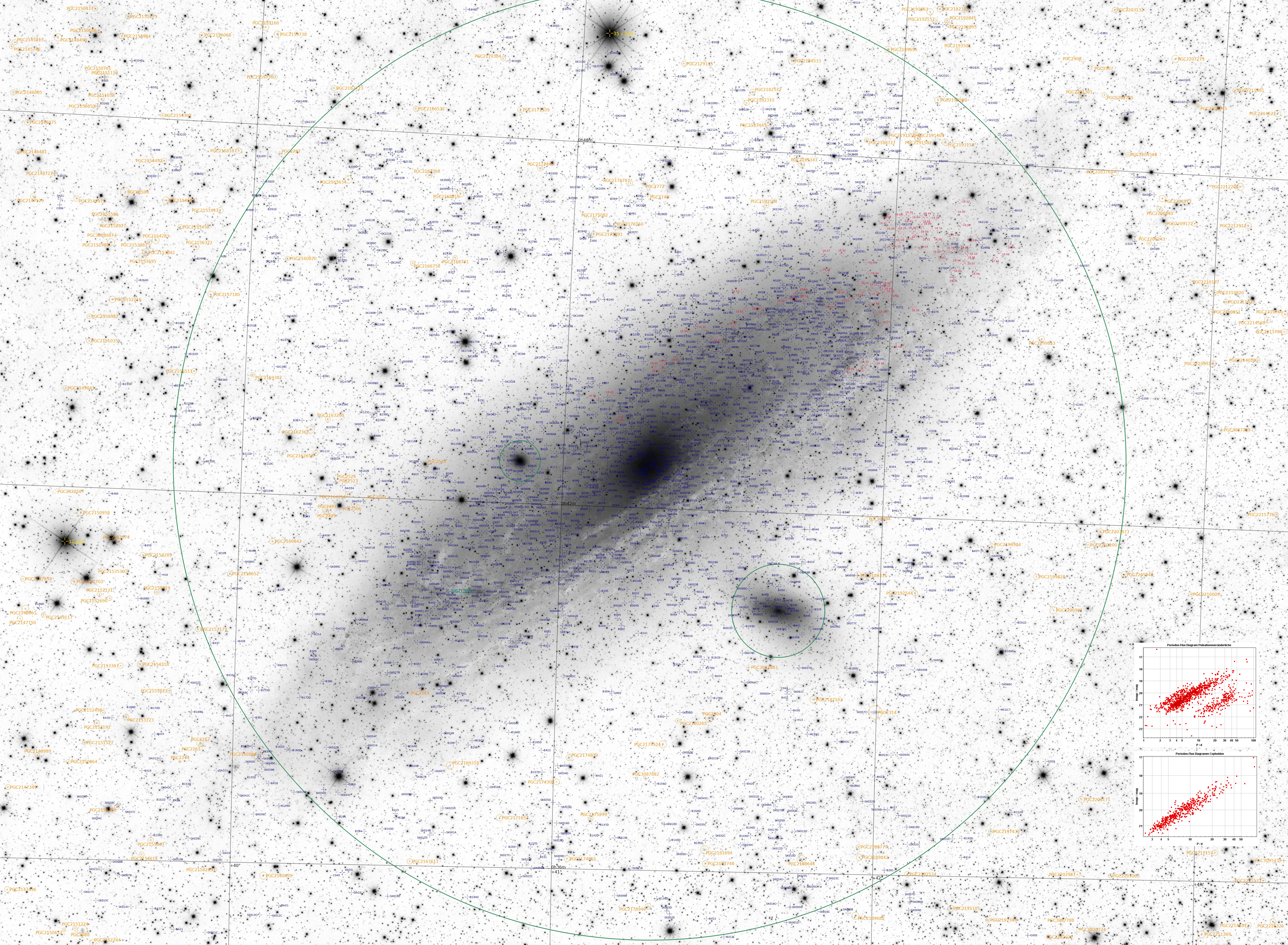
The Andromeda Galaxy - M 31
The Andromeda Galaxy, also called Andromeda Nebula or Great Andromeda Nebula, is the closest spiral galaxy to the Milky Way, about 2.5 million light-years away. It is located in the eponymous constellation Andromeda and is the most distant object that can be observed with the naked eye under good conditions without technical aids. It is often referred to as M 31 for short, after its entry in the Messier catalog. The Andromeda Galaxy is similar to the Milky Way. Both galaxies host the same types of astronomical objects, but from the "outer" perspective of the Milky Way, there is a better view of the galaxy's structure. Dark dust bands, star forming regions, and in the outer region over 200, possibly 500 globular clusters can be made out. Also, in larger and larger areas their individual stars can be observed. The galaxy has a massive black hole of about 100 million solar masses in the center, spiral arms extend from it to a distance of about 80,000 light-years, its halo extends over a million light-years.
In 1923, with the help of the world's largest telescope (2.5 meters in diameter) built shortly before, Edwin Hubble succeeded in discovering variable stars of the Cepheid class in the Andromeda Nebula, calculating their distance to 900,000 light-years, and convincing Shapley that the Andromeda Nebula - and thus all spiral nebulae - are separate galaxies. He used for this purpose the period-luminosity relation determined on Cepheids in the globular clusters of the Milky Way, with which he inferred the luminosity and from it the distance of the Cepheids in the Andromeda Galaxy.
Already in the early 1930s Edwin Hubble recognized that 140 prominent objects in the Andromeda Galaxy are probably globular clusters, although they differed more in their luminosity and were too faint for the distance assumed by him about 0.8-2.0 mag. A spectroscopy carried out shortly afterwards by Milton Lasell Humason supported this classification. Walter Baade discovered in the following time about 100 further globular clusters, which were published in 1945. Again a reduced brightness of 2.5 mag was found, which Baade could resolve about 10 years later by a corrected distance. A large number of further candidates was determined in the 1980s by automated surveys according to typical appearance or spectrum. This confirmed the stronger scatter of luminosity compared to the globular clusters of the Milky Way. Since the beginning of the 21st century, using the Hubble Space Telescope, more than 250 globular clusters have been detected, bringing the total number of globular clusters suspected in the Andromeda Galaxy to about 460. Of these, Mayall II is not only the largest of its galaxy, but of the entire Local Group. In 2005, three star clusters of an entirely new type were discovered in the Andromeda Galaxy. With a comparable number of stars, it differs from previously known globular clusters by its larger size and thus lower density.
The Andromeda Galaxy is visible to the naked eye on clear, dark nights from locations with little or no light pollution as a faint, blurry light spot ("nebula").Essentially, only the brighter central region of M 31 is visible, the center resembling a 5th magnitude star. M 31 is best observed in autumn, with culmination for 10° E on October 22, 11 p.m. With 10 × 50 binoculars, the central region is seen surrounded by an elongated region, with an apparent size of 3.5° × 1° - several times larger than the full Moon (about 30′). In a dark land sky, this allows the most prominent dust bands to be seen. The structures become more prominent with telescopes of larger aperture. The globular clusters in the galaxy can be observed in telescopes with an aperture of at least 30 cm. Images using sensitive image sensors can also be obtained with amateur telescopes or even with digital cameras and telephoto lenses with exposure times of several hours. Using narrow-band filters for the H-α line, emission nebulae can be highlighted. Observation of individual stars of the Andromeda Galaxy is also possible and thus tracing the determination of distances through Cepheids.
This is a 5 Panel Hα-LRGB-Mosaic with the middle panel being added onto a 2x2 mosaic in order to increase the image depth in the main part of the galaxy.
-
Category
Spiral Galaxy SA(s)b
-
Coordinates
RA 0h 42m 44,3s
DEC +41° 16′ 09″ -
Distance
~ 2.5 Mly
-
Apparent Mag (int.)
3.5 mag
-
Equipment
150mm f/2.8 Hypergraph
Skywatcher NEQ/AZ-EQ 6
QHY-9S mono CCD
QHY 294mm CMOS -
Exposure
L: 363 x 300 s
RGB: 240 x 180 s
Hα: 144 x 300 s
Total Integration: 54.3 h -
Publication Date
12.09.2021





